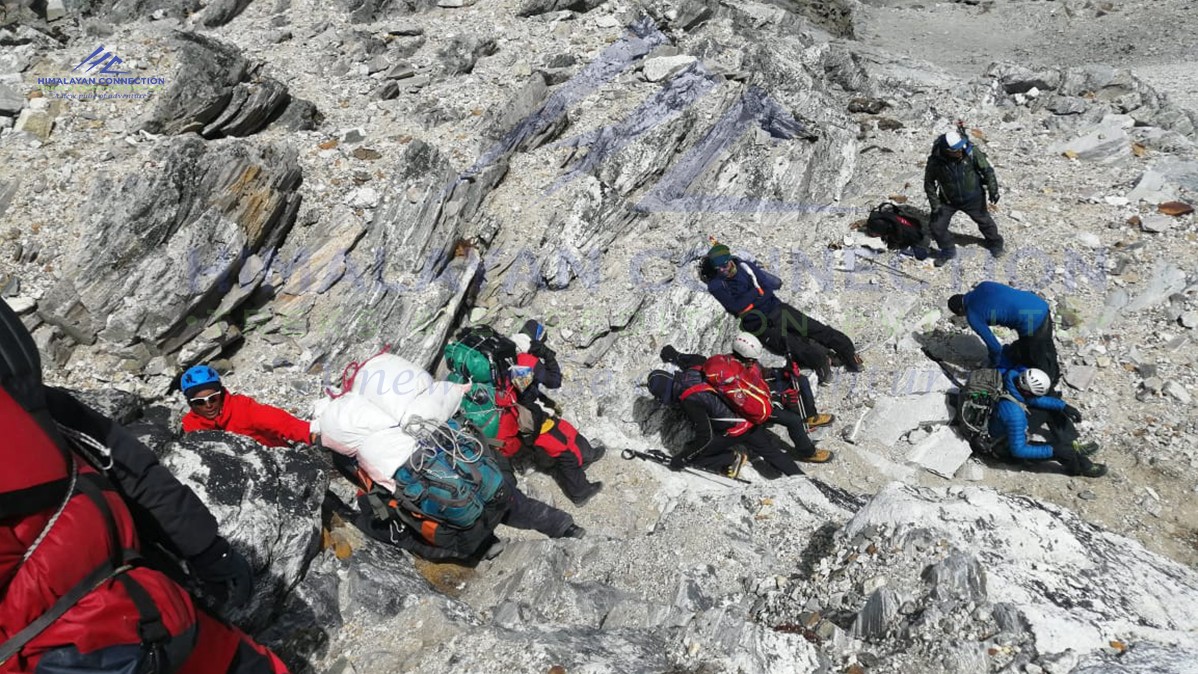
Some of the best highlights of the Tashi Lapcha Trek include the stunning views of the Himalayas, glaciers, valleys, and lakes, the unique cultural experiences of the remote Sherpa villages, the challenging climb over the Tashi Lapcha Pass, and the turquoise lakes and glaciers of the Gokyo Valley. Other highlights include the bustling town of Namche Bazaar, the important Tengboche Monastery, and the unforgettable sense of accomplishment after completing the trek.
The Tashi Lapcha Trek is a 17-day challenging trek in the Everest region of Nepal. It offers stunning views of the Himalayas, glaciers, valleys, and lakes, making it a must-do for experienced trekkers. The trek takes you through remote villages, where you can experience the unique culture and lifestyle of the Sherpa people.
The trek starts from Jiri and ends in Lukla. The highlight of the trek is the Tashi Lapcha Pass climb, which takes you through steep and rocky terrain and offers stunning views of the Cho Oyu and other peaks. The trek is a once-in-a-lifetime experience that requires good fitness and trekking experience but is definitely worth the effort.

Tashi Lapcha Pass Trek is an adventurous trekking trail that takes you through some of the most scenic landscapes of the Everest region in Nepal. The trek is a challenging one, with high altitudes, difficult terrains, and harsh weather conditions. However, the breathtaking views of the Himalayas, the glaciers, the valleys, and the lakes make it worth the effort.
The Tashi Lapcha Trek is a 17-day trek that starts from the village of Jiri and ends in Lukla. It is an alternative trek to the famous Everest Base Camp Trek, and it is less crowded and offers a more challenging experience. The trek takes you through the remote villages of the Solu Khumbu region, where you can experience the unique culture and lifestyle of the Sherpa people.
The trek begins with a long drive from Kathmandu to Jiri, a small village in the foothills of the Himalayas. From there, the trail follows the Dudh Koshi River and passes through several small villages before reaching Namche Bazaar, the gateway to the Everest region. Namche Bazaar is a bustling town that offers a variety of amenities for trekkers, including restaurants, cafes, shops, and internet access.
After acclimatizing in Namche Bazaar, the trek continues towards the Tengboche Monastery, one of the most important monasteries in the region. From there, the trail passes through Pangboche, Dingboche, and Lobuche before reaching Gorak Shep, the last stop before the Everest Base Camp.
From Gorak Shep, the trek continues towards the Kala Patthar viewpoint, which offers a stunning view of Mount Everest, the highest mountain in the world. After enjoying the views from Kala Patthar, the trek descends towards Dzongla, where the real adventure begins.
The Tashi Lapcha Trek is a challenging climb that takes you through steep and rocky terrain. The pass is located at an altitude of 5,755 meters and offers stunning views of the Cho Oyu and other peaks. The descent from the pass takes you to the beautiful Gokyo Valley, where you can explore turquoise lakes and glaciers.
The trek ends in Lukla, where you can catch a flight back to Kathmandu. The Tashi Lapcha Trek is a challenging trek that requires a good level of fitness and trekking experience. However, the stunning landscapes, unique culture, and sense of accomplishment make it a once-in-a-lifetime experience.
The Tashi Lapcha Trek is a challenging trek that requires good fitness and a trekking experience. Some of the difficulties that trekkers may face include:
Despite these difficulties, the Tashi Lapcha Pass Trek is a rewarding and unforgettable experience for those who are prepared for the challenges it presents.

The best time for the Tashi Lapcha Pass Trek is during the autumn months of September to November or the spring months of March to May. During these times, the weather is relatively stable, with clear skies and mild temperatures, making it easier to trek through the challenging terrain.
Additionally, the stunning landscapes of the region are at their best during these seasons, with the rhododendrons in bloom in the spring and the clear views of the mountains in the autumn. However, trekkers should be prepared for colder temperatures at higher altitudes, and should also be aware that the autumn season can be more crowded due to the peak trekking season.
In conclusion, The Tashi Lapcha Trek is an unforgettable adventure that takes you through some of the most stunning landscapes of the Everest region. The trek is challenging, but the rewards are immense. If you are an experienced trekker looking for an adventure of a lifetime, then the Tashi Lapcha Trek is the perfect choice for you.